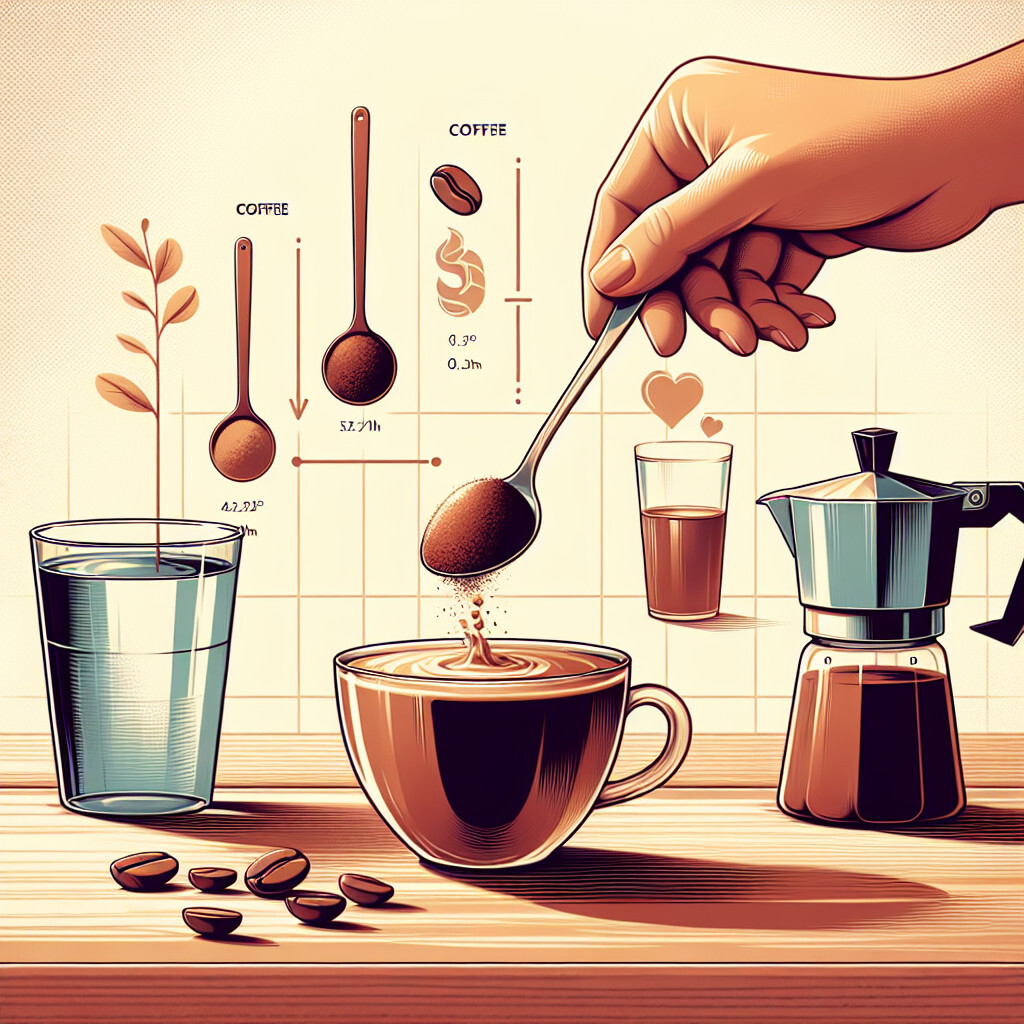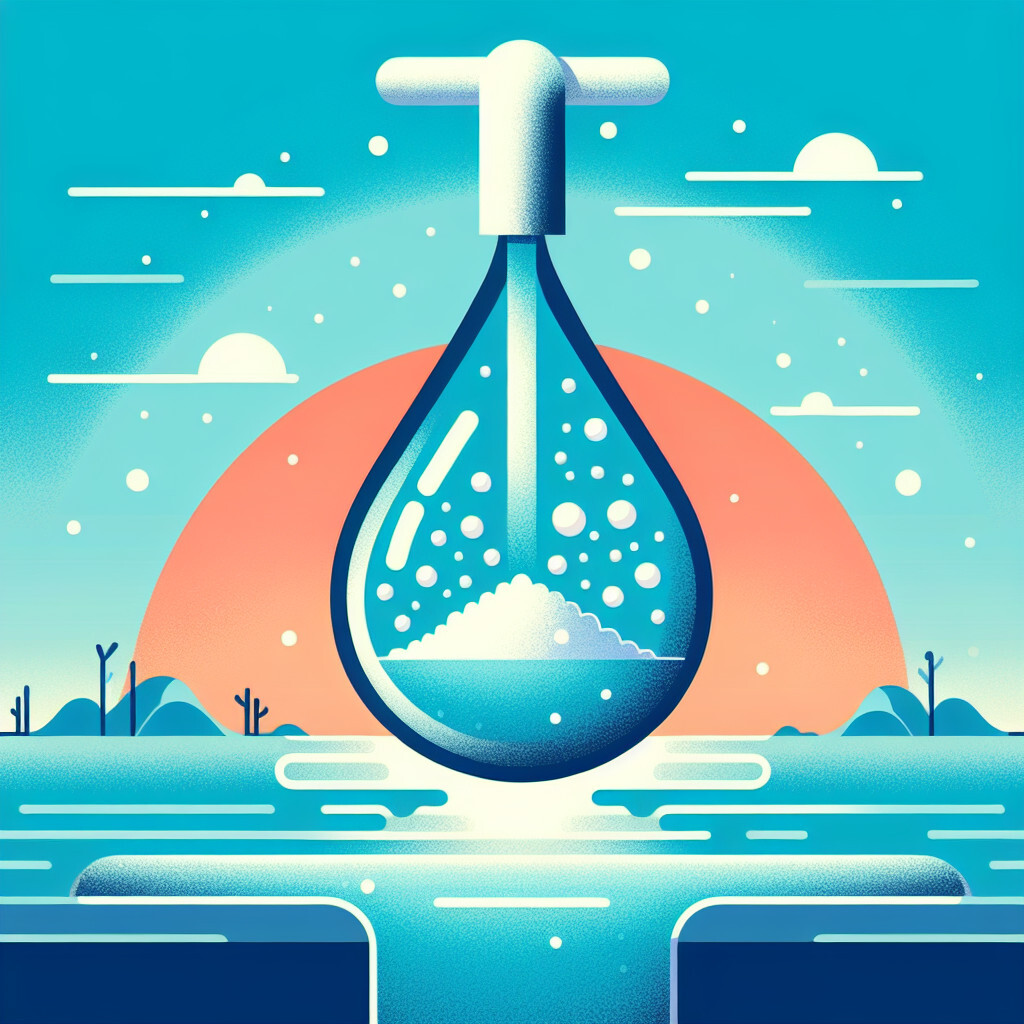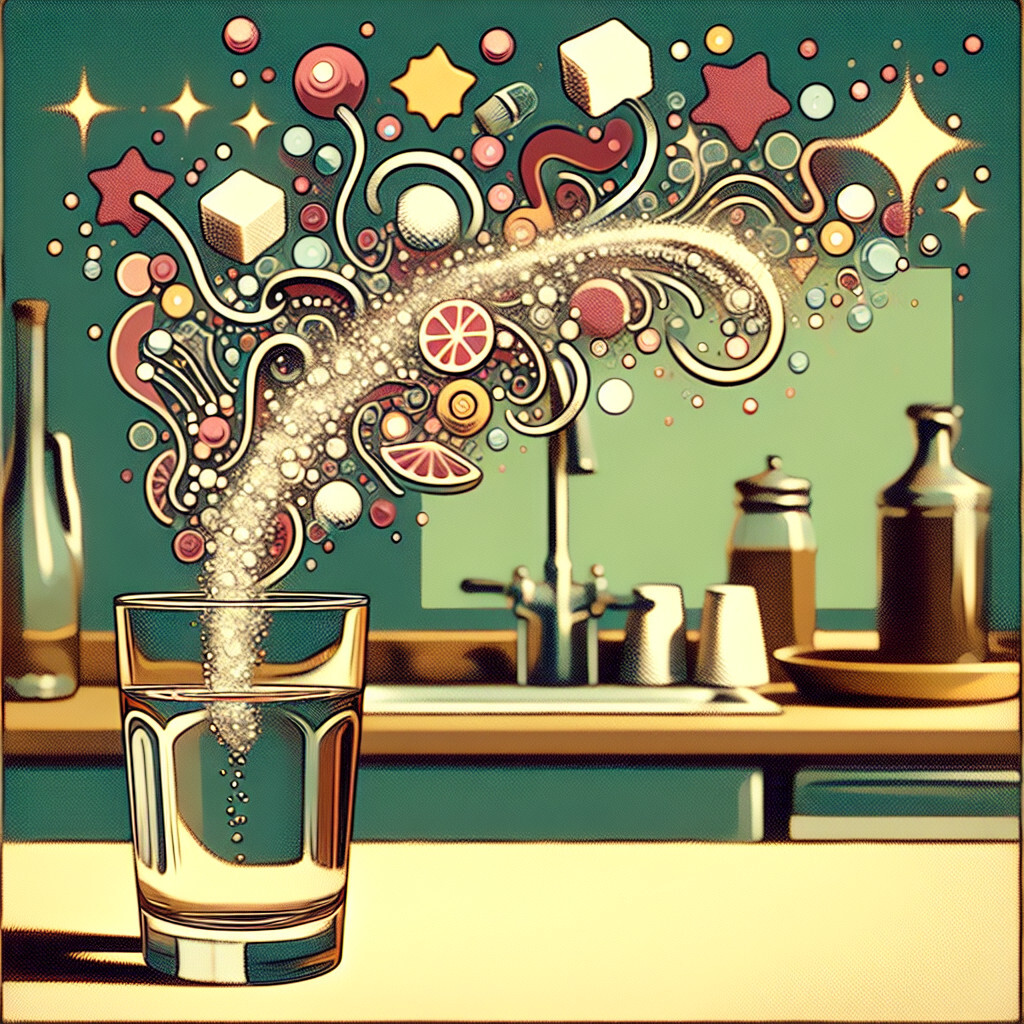-
Table of Contents
“Tap Water: Think Before You Drink!”
Introduction

Tap water, while often considered safe for consumption, can sometimes contain harmful contaminants such as lead, chlorine, and other chemicals. These substances can pose serious health risks, including gastrointestinal illnesses, reproductive problems, and neurological disorders. Therefore, it is crucial to be aware of the potential dangers of drinking tap water, especially in regions where water quality is not regularly monitored or treated.
The Hidden Dangers of Drinking Tap Water
The hidden dangers of drinking tap water are often overlooked, yet they pose a significant risk to our health. While tap water is a convenient and seemingly harmless source of hydration, it can contain a myriad of contaminants that can adversely affect our well-being. This article aims to shed light on the potential hazards lurking in your tap water and why it may be prudent to consider alternatives.
Firstly, tap water can contain harmful bacteria and viruses. Despite rigorous purification processes, some microorganisms can still find their way into our water supply. These pathogens can cause a range of illnesses, from minor gastrointestinal discomfort to severe diseases such as cholera and typhoid fever. The risk is particularly high in areas with poor sanitation or outdated water infrastructure.
Secondly, tap water can be contaminated with heavy metals such as lead, mercury, and arsenic. These substances can leach into the water supply from old pipes and plumbing fixtures, especially in older homes and buildings. Chronic exposure to these heavy metals can lead to serious health problems, including neurological damage, kidney disease, and cancer. Children are particularly vulnerable to the effects of lead exposure, which can impair cognitive development and cause behavioral problems.
Moreover, tap water often contains chemical contaminants. These can come from a variety of sources, including industrial waste, agricultural runoff, and even the disinfectants used to treat the water itself. For instance, chlorine, commonly used to kill bacteria and other pathogens in water, can react with organic matter to form harmful byproducts known as trihalomethanes. Long-term exposure to these chemicals has been linked to an increased risk of bladder, kidney, and rectal cancers.
In addition to these contaminants, tap water can also contain trace amounts of pharmaceuticals. These drugs make their way into our water supply when people take medication and then excrete it, or when unused medication is flushed down the toilet. While the concentrations of these drugs in tap water are typically very low, there is concern about the potential health effects of long-term exposure, particularly given the wide range of drugs involved, from antibiotics and hormones to antidepressants and painkillers.
Despite these risks, it’s important to note that the quality of tap water can vary greatly from one location to another. In many developed countries, tap water is heavily regulated and generally safe to drink. However, even in these countries, there can be occasional outbreaks of waterborne diseases, and certain regions may have higher levels of contaminants due to local environmental conditions or infrastructure issues.
In conclusion, while tap water is a vital resource that we often take for granted, it’s crucial to be aware of the potential dangers it can pose to our health. If you’re concerned about the quality of your tap water, consider having it tested by a certified laboratory. Depending on the results, you may want to consider using a water filter or switching to bottled water. Remember, staying informed and taking proactive measures can go a long way in protecting your health and the health of your loved ones.
Why You Should Avoid Consuming Tap Water
The quality of tap water varies greatly across different regions, and while it may be safe to drink in some areas, it is not advisable to consume it in others. This article aims to shed light on the reasons why you should avoid consuming tap water.
Firstly, tap water often contains a variety of contaminants. Despite the rigorous purification processes that municipal water undergoes, it is not uncommon for tap water to contain traces of harmful substances. These can range from heavy metals such as lead and mercury, to microorganisms like bacteria and viruses. Even though the levels of these contaminants are usually within the limits set by health authorities, long-term exposure can still pose significant health risks. For instance, lead, which can leach into water from old pipes, is a potent neurotoxin that can cause developmental issues in children and cognitive decline in adults.
Secondly, tap water frequently contains disinfection byproducts. To kill harmful microorganisms, water treatment facilities often use disinfectants like chlorine and chloramine. While these substances are effective at eliminating pathogens, they can react with organic matter in the water to form potentially harmful byproducts. Trihalomethanes and haloacetic acids, for instance, are two groups of disinfection byproducts that have been linked to an increased risk of cancer and reproductive issues.
Thirdly, tap water may contain residual pharmaceuticals. Every day, millions of people take medication for various health conditions. These drugs are not fully metabolized by the body and can end up in wastewater. While treatment plants remove a significant portion of these pharmaceuticals, some can still make their way into tap water. The long-term health effects of consuming trace amounts of these drugs are not fully understood, but there is growing concern among scientists about their potential impact.
Moreover, tap water can also have an unpleasant taste or odor. This is often due to the presence of minerals like iron and sulfur, or the disinfectants used during treatment. While this does not necessarily indicate that the water is unsafe to drink, it can make it less appealing.
Lastly, consuming tap water can contribute to the problem of plastic pollution. Many people who are wary of tap water opt for bottled water instead. However, this leads to an increase in plastic waste, much of which ends up in landfills or the ocean. By choosing filtered tap water over bottled water, you can help reduce plastic pollution.
In conclusion, while tap water is generally safe to drink, there are several reasons why you might want to avoid consuming it. From potential health risks associated with contaminants and disinfection byproducts, to environmental concerns related to plastic pollution, these issues highlight the importance of being mindful about our water consumption habits. It is advisable to use a high-quality water filter to remove potential contaminants and improve the taste of your tap water. This way, you can enjoy clean, safe water without contributing to the problem of plastic waste.
The Impact of Tap Water on Your Health
The quality of tap water and its potential impact on health is a topic of significant concern for many individuals. While tap water in many developed countries is generally considered safe to drink, there are still numerous factors that can compromise its quality, leading to potential health risks. This article aims to shed light on the potential hazards of consuming tap water and the importance of considering alternative sources of hydration.
Tap water, despite undergoing treatment before reaching our homes, can still contain harmful contaminants. These contaminants can range from heavy metals such as lead and mercury to microorganisms like bacteria and viruses. The presence of these contaminants in tap water is primarily due to pollution, aging infrastructure, and inadequate water treatment processes.
Lead, for instance, can leach into the water supply from old pipes and fixtures. Chronic exposure to lead, even at low levels, can lead to serious health problems, including neurological damage, cardiovascular issues, and impaired kidney function. Similarly, mercury, another heavy metal that can find its way into tap water, is known to cause damage to the nervous, digestive, and immune systems.
Microorganisms, on the other hand, can cause a variety of illnesses, ranging from mild gastrointestinal discomfort to severe diseases like cholera and typhoid. While water treatment facilities typically use chlorine to kill these microorganisms, some can survive and make their way into the tap water. Moreover, the use of chlorine itself can lead to other health issues. Chlorine reacts with organic matter in water to form disinfection byproducts, some of which have been linked to an increased risk of cancer.
In addition to these contaminants, tap water can also contain trace amounts of pharmaceuticals, pesticides, and other synthetic compounds. These substances can enter the water supply through agricultural runoff, industrial waste, or improper disposal of medications. The long-term health effects of exposure to these compounds are not fully understood, but some studies suggest potential links to hormonal disruption and increased cancer risk.
While the levels of these contaminants in tap water are typically below the limits set by health authorities, the cumulative effect of long-term exposure is not well-studied. Moreover, these limits do not take into account the potential synergistic effects of exposure to multiple contaminants simultaneously.
Given these potential health risks, it is prudent to consider alternatives to tap water for drinking and cooking. Bottled water is a popular choice, but it is not without its own issues, including environmental impact and potential chemical leaching from the plastic bottles. A more sustainable and potentially safer option is to use a high-quality water filter that can remove a wide range of contaminants.
In conclusion, while tap water is generally safe to drink in many parts of the world, there are still potential health risks associated with its consumption. These risks stem from the presence of various contaminants, including heavy metals, microorganisms, and synthetic compounds. Therefore, it is advisable to consider alternative sources of water or use a water filter to ensure the water you consume is as clean and safe as possible.
Understanding the Risks of Unfiltered Tap Water
The quality of tap water varies greatly across different regions, and while it may be safe to drink in some areas, it is not always the case. Understanding the risks of unfiltered tap water is crucial to safeguarding our health.
Tap water, in many parts of the world, is treated with a variety of chemicals to kill bacteria and other microorganisms. One of the most common chemicals used is chlorine. While chlorine is effective in eliminating most harmful bacteria, it also reacts with organic matter in the water to form byproducts known as trihalomethanes (THMs). These byproducts have been linked to an increased risk of bladder and colorectal cancer.
In addition to chlorine and its byproducts, tap water can also contain heavy metals such as lead, mercury, and arsenic. These metals can leach into the water supply from old pipes and plumbing fixtures. Long-term exposure to these heavy metals can lead to a variety of health problems, including developmental issues in children, kidney damage, and increased risk of cardiovascular disease.
Furthermore, tap water can also be contaminated with pesticides and herbicides. These chemicals can seep into the groundwater from agricultural runoff and can end up in the tap water supply. Some of these chemicals have been linked to a variety of health problems, including hormonal disruption and an increased risk of certain types of cancer.
Another concern with unfiltered tap water is the presence of microorganisms. While most water treatment processes are effective in killing bacteria, they are not always successful in eliminating all types of microorganisms. For instance, the protozoan parasite Cryptosporidium, which can cause a severe diarrheal disease, is resistant to chlorine disinfection. Similarly, the bacteria Legionella, which can cause a severe form of pneumonia known as Legionnaires’ disease, can survive and multiply in water systems, including those in homes and hospitals.
Moreover, tap water can also contain pharmaceuticals and personal care products. These substances can enter the water supply when people take medication and then excrete it, or when they wash products off their bodies and down the drain. While the health effects of long-term exposure to these substances are not fully understood, there is growing concern about their potential impact.
In conclusion, while tap water is often considered safe to drink, there are numerous potential contaminants that can pose health risks. These include chlorine and its byproducts, heavy metals, pesticides and herbicides, microorganisms, and pharmaceuticals and personal care products. Therefore, it is advisable to use a water filter that can effectively remove these contaminants, or to drink bottled water from a reputable source. It is also important to regularly test your tap water, especially if you live in an older home with potentially lead-containing plumbing, or in an area with known water quality issues. By understanding the risks of unfiltered tap water, you can take steps to protect your health and the health of your family.
Q&A
1. Question: Why shouldn’t I drink tap water?
Answer: Tap water can sometimes contain harmful contaminants such as lead, chlorine, and bacteria, which can pose health risks.
2. Question: What can happen if I drink contaminated tap water?
Answer: Drinking contaminated tap water can lead to health issues such as gastrointestinal problems, reproductive issues, and neurological disorders.
3. Question: How can I ensure my tap water is safe to drink?
Answer: You can ensure your tap water is safe by having it tested by a certified laboratory or using a home water testing kit.
4. Question: What are some alternatives to drinking tap water?
Answer: Alternatives to drinking tap water include bottled water, filtered water, or boiled water.
Conclusion
In conclusion, not drinking tap water may be due to concerns about its safety, cleanliness, and potential contamination with harmful substances. It’s essential to ensure that the water you consume is free from pollutants and bacteria to maintain good health. However, it’s also important to note that in many developed countries, tap water undergoes rigorous testing and treatment to ensure it’s safe for consumption. Therefore, the decision to avoid tap water should be based on the quality of water in your specific location.






